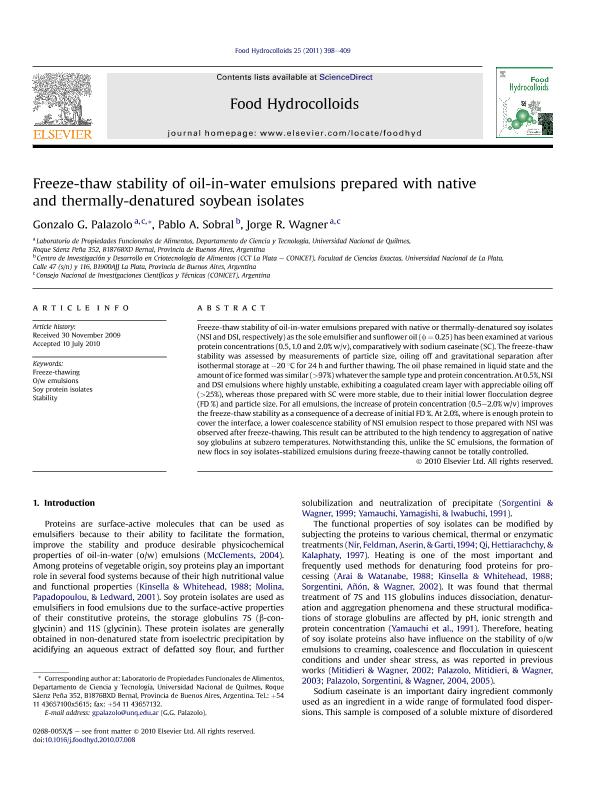Artículo
Freeze-thaw stability of oil-in-water emulsions prepared with native and thermally denatured soybean isolates
Fecha de publicación:
04/2011
Editorial:
Elsevier
Revista:
Food Hydrocolloids
ISSN:
0268-005X
Idioma:
Inglés
Tipo de recurso:
Artículo publicado
Clasificación temática:
Resumen
Freeze-thaw stability of oil-in-water emulsions prepared with native or thermally-denatured soy isolates (NSI and DSI, respectively) as the sole emulsifier and sunflower oil (φ = 0.25) has been examined at various protein concentrations (0.5, 1.0 and 2.0%. w/v), comparatively with sodium caseinate (SC). The freeze-thaw stability was assessed by measurements of particle size, oiling off and gravitational separation after isothermal storage at -20°C for 24. h and further thawing. The oil phase remained in liquid state and the amount of ice formed was similar (>97%) whatever the sample type and protein concentration. At 0.5%, NSI and DSI emulsions where highly unstable, exhibiting a coagulated cream layer with appreciable oiling off (>25%), whereas those prepared with SC were more stable, due to their initial lower flocculation degree (FD %) and particle size. For all emulsions, the increase of protein concentration (0.5-2.0%. w/v) improves the freeze-thaw stability as a consequence of a decrease of initial FD %. At 2.0%, where is enough protein to cover the interface, a lower coalescence stability of NSI emulsion respect to those prepared with NSI was observed after freeze-thawing. This result can be attributed to the high tendency to aggregation of native soy globulins at subzero temperatures. Notwithstanding this, unlike the SC emulsions, the formation of new flocs in soy isolates-stabilized emulsions during freeze-thawing cannot be totally controlled.
Palabras clave:
FREEZE-THAWING
,
O/W EMULSIONS
,
SOY PROTEIN ISOLATES
,
STABILITY
Archivos asociados
Licencia
Identificadores
Colecciones
Articulos(SEDE CENTRAL)
Articulos de SEDE CENTRAL
Articulos de SEDE CENTRAL
Citación
Palazolo, Gonzalo Gastón; Sobral, Pablo Antonio; Wagner, Jorge Ricardo; Freeze-thaw stability of oil-in-water emulsions prepared with native and thermally denatured soybean isolates; Elsevier; Food Hydrocolloids; 25; 3; 4-2011; 398-409
Compartir
Altmétricas




